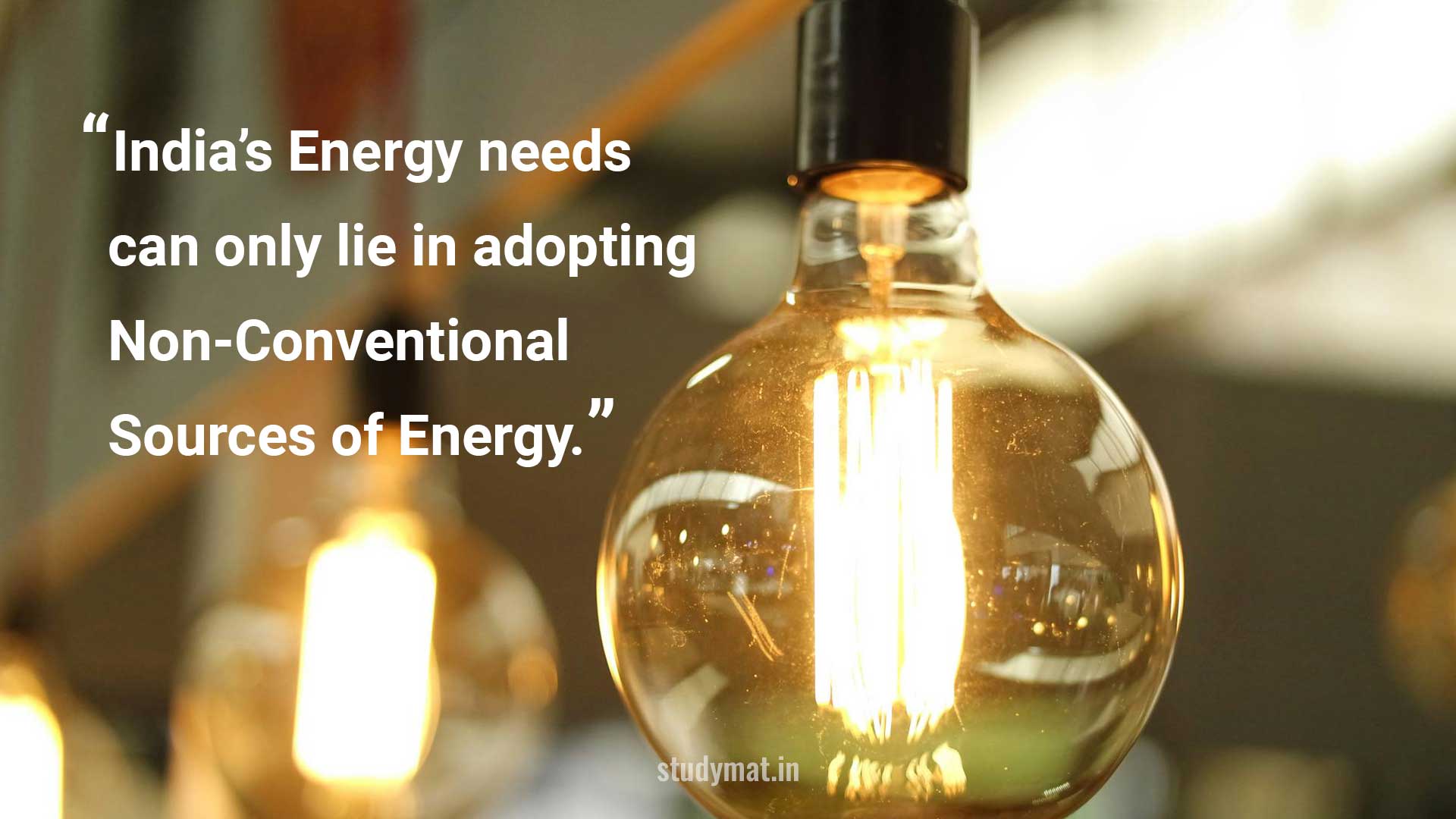In this article, we will explain on the statement,
“India’s Energy needs can only lie in adopting Non-Conventional Sources of Energy.”
In today’s world, finding ways to meet our energy needs sustainably is crucial for the well-being of our planet and future generations. India, as a rapidly developing country, it’s vital to find sustainable ways to meet its energy needs. This means turning to alternative sources of energy that are clean and renewable. Non-conventional sources like solar, wind, biomass, and others offer promising solutions. Let’s explore how these sources can help India meet its energy demands while reducing environmental impact.
1. Biomass Energy:
Biomass Energy comes from plants and organic materials. India has a lot of agricultural waste, like crop residues and animal dung, which can be used to produce biomass energy. This type of energy is renewable and helps reduce pollution.
2. Solar Energy:
Solar Energy comes from the sun, and India gets plenty of sunlight throughout the year. By using solar panels, we can convert sunlight into electricity to power homes, businesses, and even entire cities. Solar Energy is clean, abundant, and sustainable.
Read Also:
Explain the Significance of Kul and Bamboo Drip Irrigation Practices.
3. Fuel Cells Energy:
Fuel Cells produce electricity through a chemical reaction between hydrogen and oxygen. This technology is clean and efficient, and it can be used in various applications, from powering vehicles to generating electricity for buildings.
4. Wave and Tidal Energy:
India is surrounded by the ocean, which makes Wave and Tidal Energy potential sources of power. Devices called wave energy converters and tidal turbines can capture the energy from ocean waves and tides and convert it into electricity. This renewable energy source is reliable and environmentally friendly.
5. Geothermal Energy:
Geothermal Energy comes from heat stored beneath the Earth’s surface. India has geothermal hotspots where this heat can be harnessed to generate electricity and provide heating and cooling for buildings. Geothermal Energy is clean, renewable, and available year-round.
Read Also:
Explain an Indirect Use Value of Biodiversity.
“Species Diversity is the most visible component of Biodiversity.” Explain.
Differentiate between Food Chain and Food Web.
6. Co-generation Energy:
Co-generation, also known as combined heat and power (CHP), involves producing electricity and useful heat simultaneously from the same energy source. This technology is efficient and can reduce energy waste by utilizing heat that would otherwise be wasted in conventional power generation processes.
7. Wind Energy:
India has vast wind resources, especially in coastal regions and hilly areas. Wind turbines can capture the kinetic energy of the wind and convert it into electricity. Wind Energy is clean, renewable, and abundant, making it a valuable resource for meeting India’s energy needs.
By adopting these non-conventional sources of energy like biomass, solar, fuel cells, wave and tidal, geothermal, co-generation, and wind energy, India can reduce its dependence on fossil fuels, lower greenhouse gas emissions, and move towards a more sustainable and secure energy future.
Related Search:
FAQ:
- What is the need of using non-conventional sources of energy?
- Why is it possible for India to develop the non-conventional energy sources?
- What is the status of non-conventional energy sources in India and what are their future prospect?
Follow us:
If you like this article, you can Follow us on Facebook.
Also, you can Join our Official Facebook Group for QnA Sessions and Discussions with the worldwide IGNOU community.



